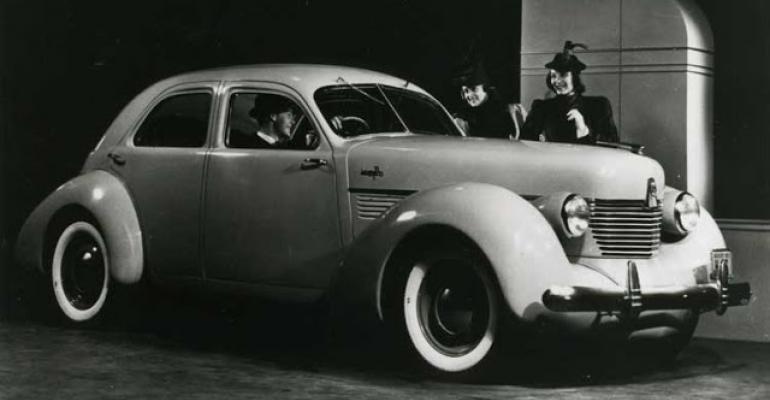75 Years Ago (August 1938): Crosley Car Rumored; Ford Gets “Juice” Brakes; Shifting Moves to Column; New Hupps planned

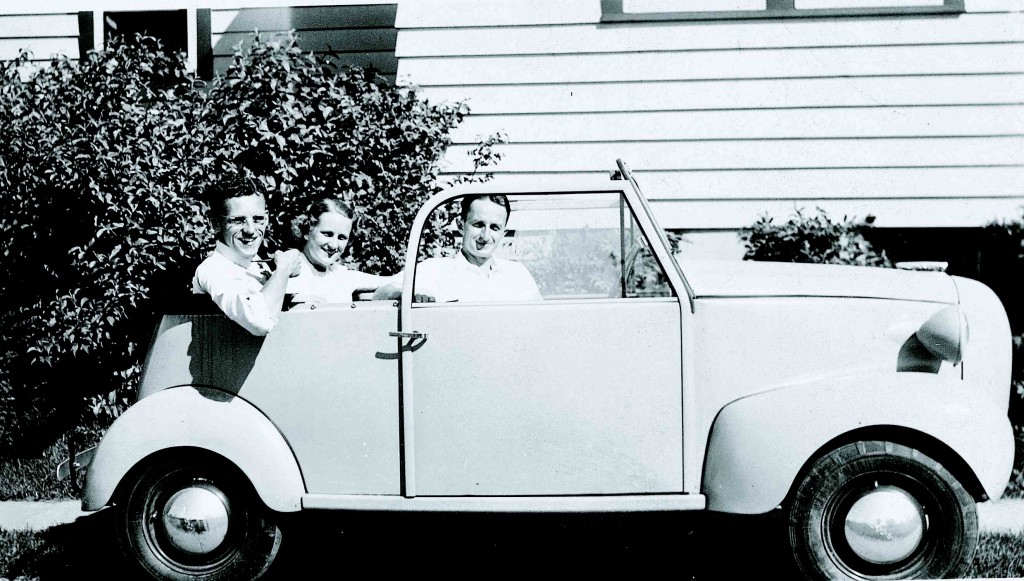
(Production of a $250 2-door convertible, later followed by a 4-passenger variant, begins in 1939 at plants in Richmond and Marion, IN. It is built on an 80-in. [2,032-mm] wheelbase, weighs 925 lbs. [420 kg] and is powered by a 2-cyl. Waukeshaair-cooled engine connected to a 3-speed manual gearbox. In 1941 a convertible sedan, station wagon, mini panel truck and hardtop and convertible pickups join the roster.

Post-WWII production resumes at Marion in 1946, the Richmond plant having been sold. The Hot Shot and Super Sports 2-passenger sports cars bow in 1949 and the Farm-O-Road – designed for farming as well as on-road applications – in 1950. Production ends in July 1952 after an estimated 75,000 vehicles are built over a period of 10 years.)
“The ranks of manufacturers using hydraulic brakes will be almost 100% this year, the indication being Ford will turn to the fluid-type.” Ford’s entire lineup, including two Lincoln Zephyrs as well as the “116-in. (2,946-mm) wheelbase Ford deluxe” (i.e. Mercury) and standard Ford will use the new brake system. Bendix, Detroit Harvester, Kelsey-Hayes and Wagner Electric are among the brake system’s suppliers.
“Indications are that almost all manufacturers will institute important education campaigns to sell the public on steering-column gear shifting,” according to WAR. The new mechanism will be standard in some models and optional in others. Different types ranging from “the mechanically linked, similar to Pontiac’s last year up to hydraulic, electric and vacuum devices of various sorts,” will be used.
Following its reorganization, Hupp Motor Car acknowledges a new model will join its ’39 lineup. The purchase of a “large amount of tools, dies, jigs fixtures and inventory understood to be formerly the property Cord Corp., indicates that Hupp will offer a car of very advanced lines.” The purchase of these materials as well as the outlay for resuming production “demonstrates that, financially, the company is prepared to reach out for its share of the 1939 market.” (Hupp purchases the dies for the manufacture of the defunct Cord 810/812 models. The Cord body and platform will be modified to fit a rear- rather than front-drive application and the front end is restyled to eliminate the Cord’s expensive hidden headlights and its signature “coffin” nose styling. Lacking adequate production facilities, Hupp contracts with financially ailing Graham-Paige Motors to manufacture its new Cord-based Skylark series. Despite early buyer enthusiasm, production delays kill interest in the car and Hupp closes its doors with fewer than 500 Skylarks sold. Graham also utilizes little-modified Skylark dies to build some 2,600 units of ’40 and ’41 Hollywood variants, after which Graham, too, ceases to exist.)
60 Years Ago (August 1953): GM Hydra-Matic Plant Burns; Strong Output Planned; Buick’s Outstanding V-8 Plant
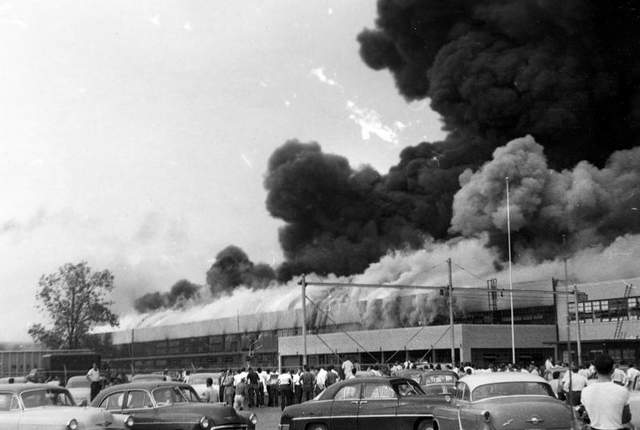
An Aug.12 fire guts General Motors’ Hydra-Matic automatic transmission plant in Livonia, MI, according to a front-page story in WAR’s Aug. 17, 1953, issue. The fire begins when sparks from a welder’s torch ignite oil dripping from a gear placed on a nearby drying rack. “The welder and his assistant had almost stopped the fire when another employee played a water hose on the (burning) oil which exploded.” Despite the efforts of 300 firemen from seven communities, the plant walls cave in and most of the roof collapses atop the machinery.
To minimize the impact from the lack of transmissions, not only to itself, but to Lincoln, Nash, Kaiser-Frazer and Hudson, GM quickly leases 1.5 million sq.-ft. (139.4 sq.-m.) of unused floor space at Kaiser-Frazer’s Willow Run assembly plant and various GM divisions go to work repairing damaged machinery. A dearth of Hydra-Matics prompts Cadillac and Oldsmobile to temporarily adopt Buick’s Dynaflow automatic gearbox, while Pontiac substitutes Chevy’s Powerglide. According to a follow-up story, Hydra-Matic production was expected to resume at Willow Run by Oct.1 with volume shipments resuming in November. “It is estimated that 171 machine shops in 51 U.S. cities also are cooperating in the rehabilitation program.”
With 538,336 cars slated for production in September, third-quarter 1953 volume will reach 1,662,336 units, nearly twice the 838,290 built in steel-short July-September 1952. It will be the second-best third-quarter tally in history, trailing only the 1,898,783 cars turned out in like-1950. However, GM’s September car output has been cut to 224,189 units from the originally planned 274,000 due to the transmission shortage resulting from the loss of the Hydra-Matic plant. That follows a fire-related loss of more than 40,000 units in August. Ford will use overtime and Saturday work to meet its 161,000-unit September plan. Chrysler will build an estimated 108,000 cars in September, its changeover program having been hampered by a lengthy tool and die shop strike.

Buick’s new V-8 engine plant in Flint, MI, “is considered one the industry’s outstanding examples of automation. Giant broaching machines, milling machines, centerless grinders and a ‘cold heading’ process for valve pushrod ends all work automatically with a perfection and speed seldom attained even with the most advanced manufacturing practices.” The 850,000-sq.-ft. (79,000-sq.-m.) plant built the new V-8 (replacing Buick’s aging I-8) for 50- and 70-Series models in ’53 and will supply a version for the 40-Series in ’54. Each engine is tested for 30 minutes in dynamometer facilities accommodating up to 240 engines simultaneously. If approved, engines are balanced and painted before being shipped to the final assembly lines. The addition of this plant brings floor space at Buick’s Flint-area plants “to nearly 9,000,000 sq.-ft. (836,100 sq.-m.).”
50 Years Ago (August 1963): V-8 Comeback; ’63 Car Output Record; Rail Strike Threat; Ford Allegro Bows
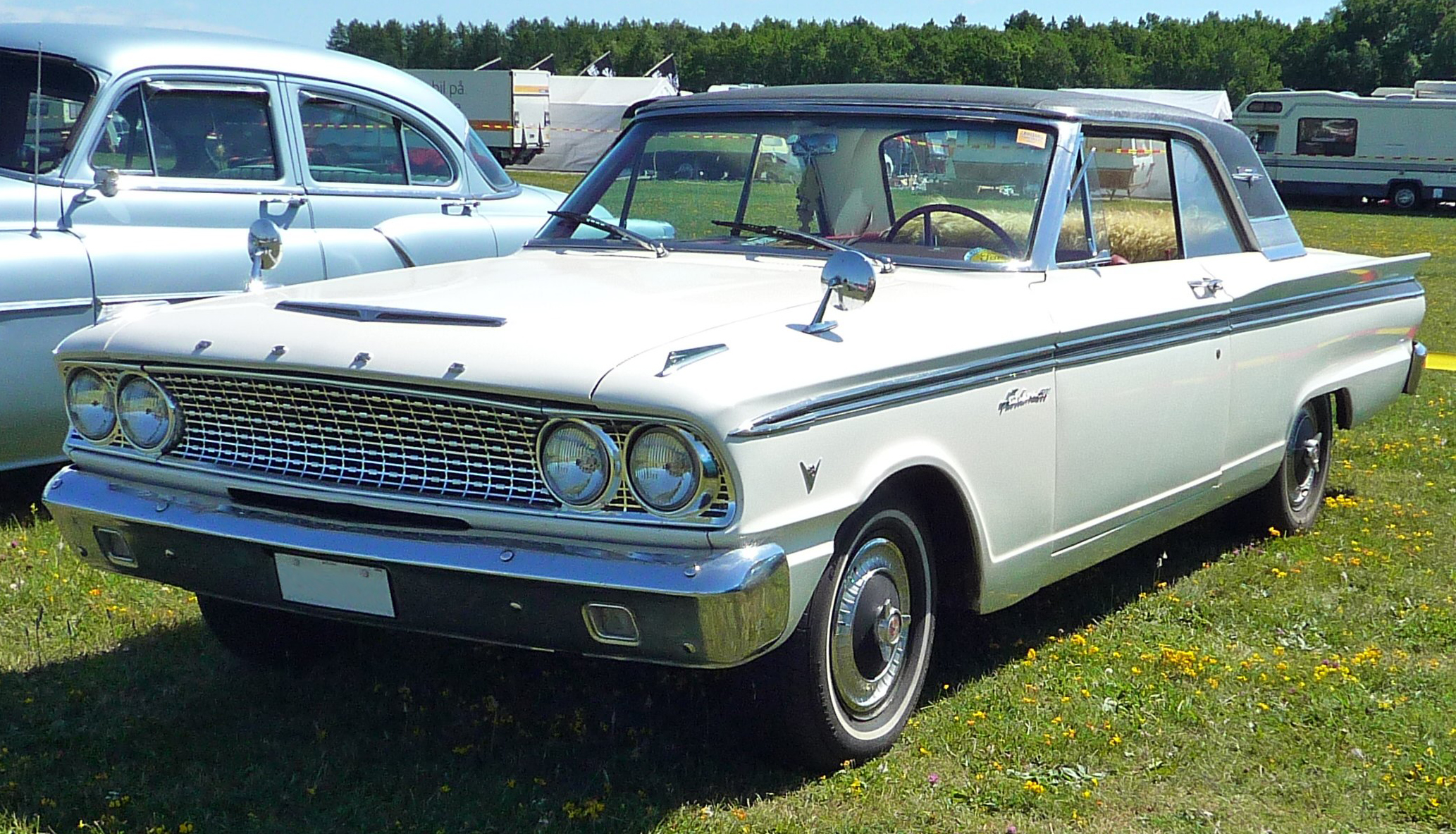

With only Studebaker Avanti yet to end output of ’63 models, U.S. car production in the ’63 model year totals a record 7,340,000 units, according to a WAR analysis. That represents a 15.7% increase from the 6,686,746 cars built in the ’62 run. GM builds a record 3,924,000 of its ’63 models, 9.0% more than the prior year, while American Motors turns out a record 464,000 cars (topping 500,000 worldwide for the first time), a gain of 5.0% on ’62. Ford production ends at a second-best 1,936,000 units while Chrysler’s tally hits 939,500, a 6-year high. Studebaker, however, suffers a 19.6% decline in ’63-model output to 76,146 cars.
Auto makers are worried that a possible rail strike may shut down assembly plants during the crucial model-changeover period. Contract talks between the railroads and labor unions have collapsed meaning a strike is likely once the 30-day contract extension expires Aug. 29. “At best, parts and components stockpiling at assembly plants is limited to two or three days’ supply.” A strike during model changeover or new-model buildup can be more disruptive than at other times of the year, according to the story.

Ford’s new Allegro is “more than a dream car,” according to WAR editors, who see it bearing “a striking resemblance to a forthcoming ’64½ model (Mustang) to be placed on sale early in calendar 1964.” It is billed as a “practical dream car” because it accommodates current Falcon/Comet in-line 6-cyl. engines as well as the front-drive V-4 powertrain developed for use in the proposed Cardinal small car (championed by Ford Div. head Robert S. McNamara but killed by his successor Lee A. Iacocca in favor of the Mustang) that ultimately ends up as the German-built Taunus 12-M. The story cites the unique cantilevered steering wheel as the Allegro’s biggest engineering innovation. The steering column is center-mounted in the car, from which extends an arm with the steering wheel mounted to it. Buttons control 3-ins. (76 mm) of fore-aft arm movement and 5-ins. (127 mm) of vertical movement.
25 Years Ago (August 1988): Trucks to Top 4.0 Million; Slow APV Startup; Diamond-Star Sets Output Launch
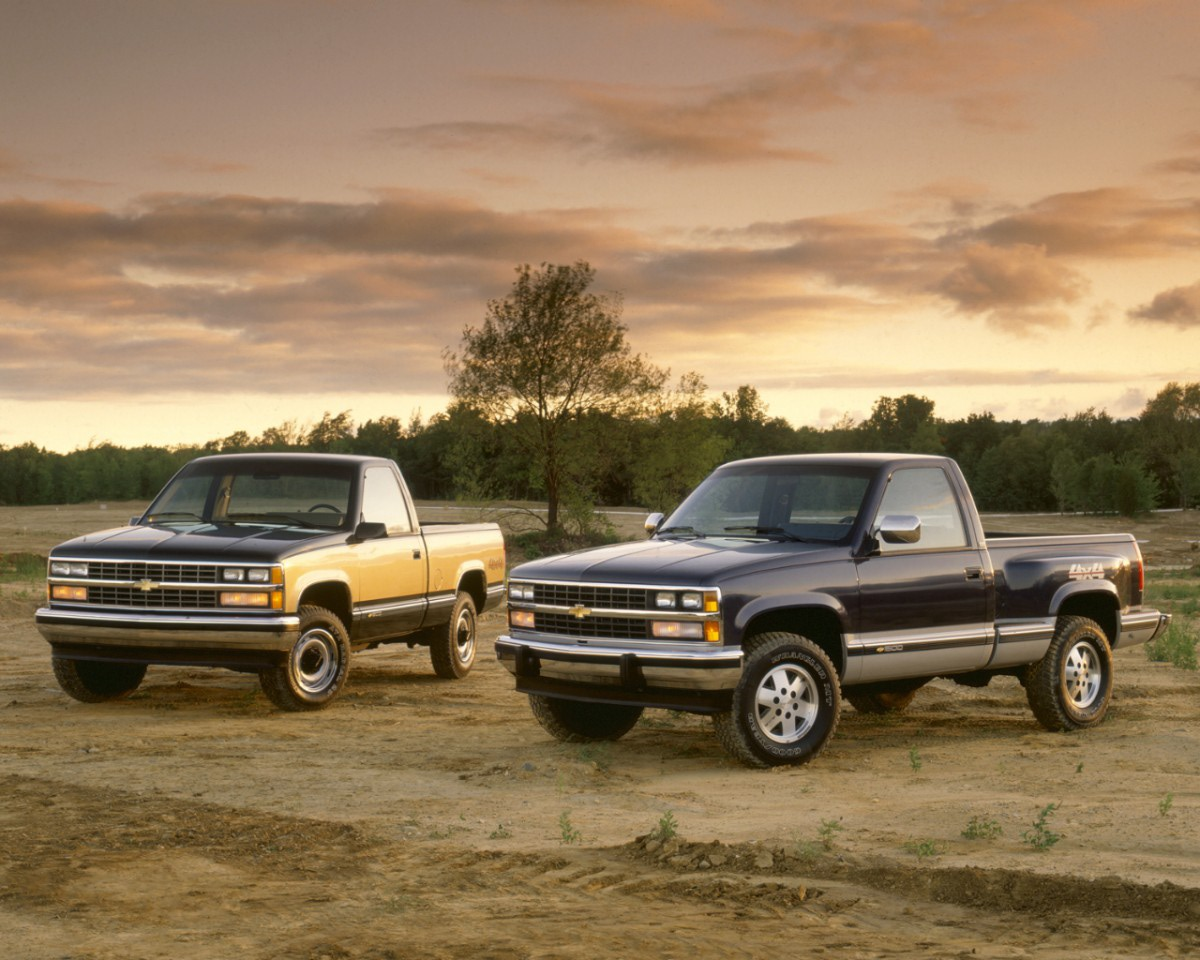
Hard-pressed to meet record demand, U.S. truck makers are forecast to build more than 4.0 million trucks in 1988, the highest number built in any year in history. Including the 1,016,000 slated for production in the fourth quarter, WAR projects output for the year to reach 4,073,000 units, an increase of 247,000, or 6.5%, from the current record of 3,836,000 units built in 1987. To meet robust schedules, General Motors will add a second shift to its only remaining sing-shift plant, in Pontiac, MI, in September. Ford plans call for the addition of a second shift at its last single-shift plant, Michigan Truck in Wayne, MI, in November.
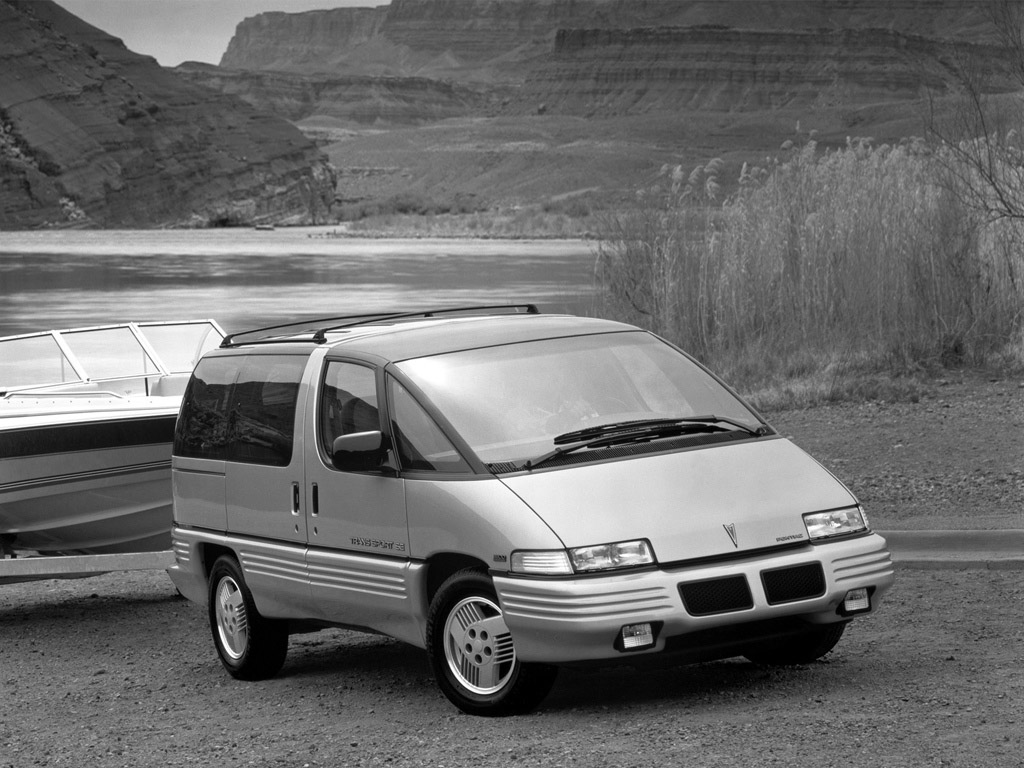
GM has set a slow launch for its new plastic-body APV front-drive vans, according to production plans obtained by WAR. Those plans indicate the Tarrytown, NY, plant will build only about 24,100 Chevy Lumina APV and Pontiac Trans Sport vans in January-July 1989, 16,500 of them for Chevy and 7,600 for Pontiac.
Output is slated to start with just six units in January and end the ’89 run in July with 8,100 assemblies. In addition to the APVs, GM plans to build 211,000 rear-drive Chevy Astro/GMC Safari M-body vans in ’89 along with 200,000 larger rear-drive G-body vans.
 Diamond-Star Motors, the Chrysler-Mitsubishi joint venture, will begin output next month at the recently christened Normal, IL, assembly plant. But its cars, Mitsubishi Eclipse and Plymouth Laser sporty 2-door hatchbacks, won’t go on sale until January 1989 as ’90 models. Only about 3,000 of them will be built through the end of 1988 as output slowly ramps up from 200 in September to 1,200 in December.
Diamond-Star Motors, the Chrysler-Mitsubishi joint venture, will begin output next month at the recently christened Normal, IL, assembly plant. But its cars, Mitsubishi Eclipse and Plymouth Laser sporty 2-door hatchbacks, won’t go on sale until January 1989 as ’90 models. Only about 3,000 of them will be built through the end of 1988 as output slowly ramps up from 200 in September to 1,200 in December.

